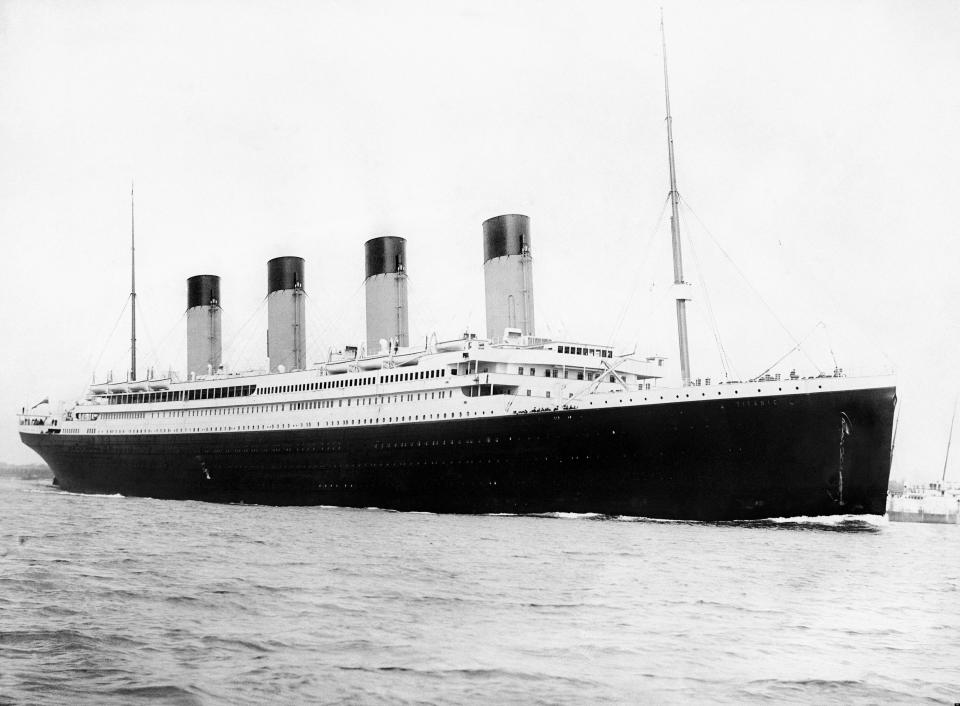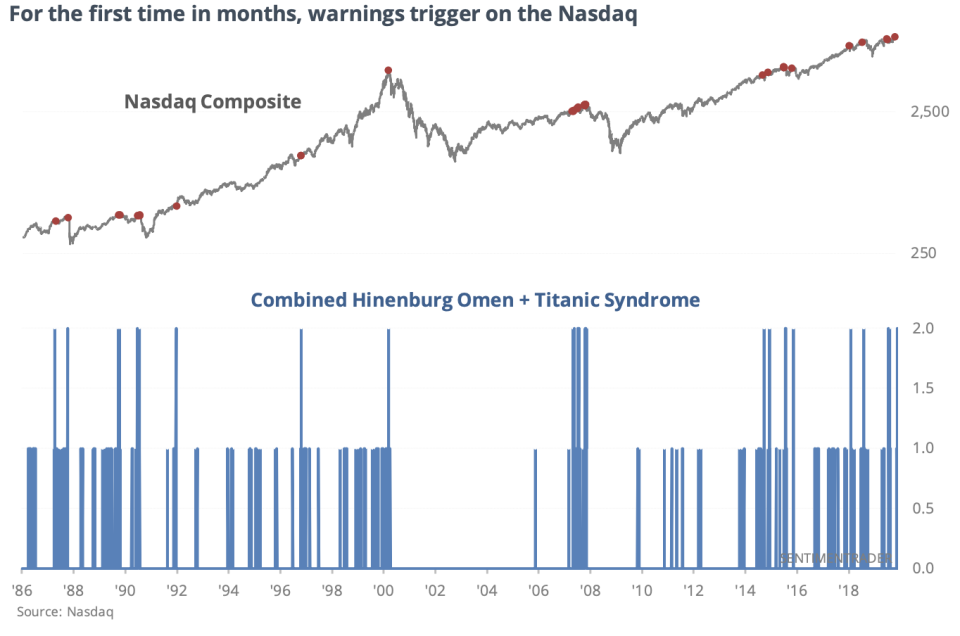The 'Hindenburg Omen' and 'Titantic Syndrome' were just triggered on the Nasdaq
And today, a pound of flesh for stock market bears. Sorry, bulls.
Unbeknownst to many except to the most plugged in chart watchers on Wall Street like Sundial Capital Research strategist Jason Goepfert, two technical warning signs were triggered at the same time on the Nasdaq Composite (^IXIC) Wednesday. What are the formations? The dreary sounding Hindenburg Omen and Titanic Syndrome.
Goepfert breaks down each technical warning sign as such.

The Hindenburg Omen’s guidelines say the market has to be in an uptrend, it must show a large number of stocks hitting 52-week highs and 52-week lows and display negatively diverging breadth momentum. As for the Titanic Syndrome, the rule of thumb is that the market must have reached a new high in the past seven sessions and then suddenly more stocks hit 52-week lows than 52-week highs.
Confusing stuff, and to fundamental stock analysts this is probably a foreign language (and worthy of a chuckle). But both of these technical happenings occurring at the same time usually proves awful for a particular index in the days, weeks and months ahead, Goepfert’s research shows.

The Nasdaq’s median performance (1986-2019) following when both the Hindenburg Omen and Titanic Syndrome are triggered in the same month:
One-week: -1.1%
Two-weeks: 0%
One-month: -0.7%
Two-months: -2.1%
Three-months: -4%
Six-months: -5.9%
The S&P 500 has dropped a median of 2.8% one year from when the Hindenburg Omen and Titanic Syndrome were triggered in the same month.
“If we can get past the silly names, it’s worth taking note,” writes Goepfert. “These warnings started to trigger in mid-July, and ended up preceding a pullback. At the time, they were clustering on both the NYSE and Nasdaq. So far this time, it’s only on the Nasdaq.”
Buckle up, say the stock charts.
Brian Sozzi is an editor-at-large and co-anchor of The First Trade at Yahoo Finance. Follow him on Twitter @BrianSozzi
Read the latest financial and business news from Yahoo Finance
SmileDirect co-founder: here’s what life will look like post IPO
Starbucks CEO on what China has in store for the coffee giant
Follow Yahoo Finance on Twitter, Facebook, Instagram, Flipboard, SmartNews, LinkedIn, YouTube, and reddit.
